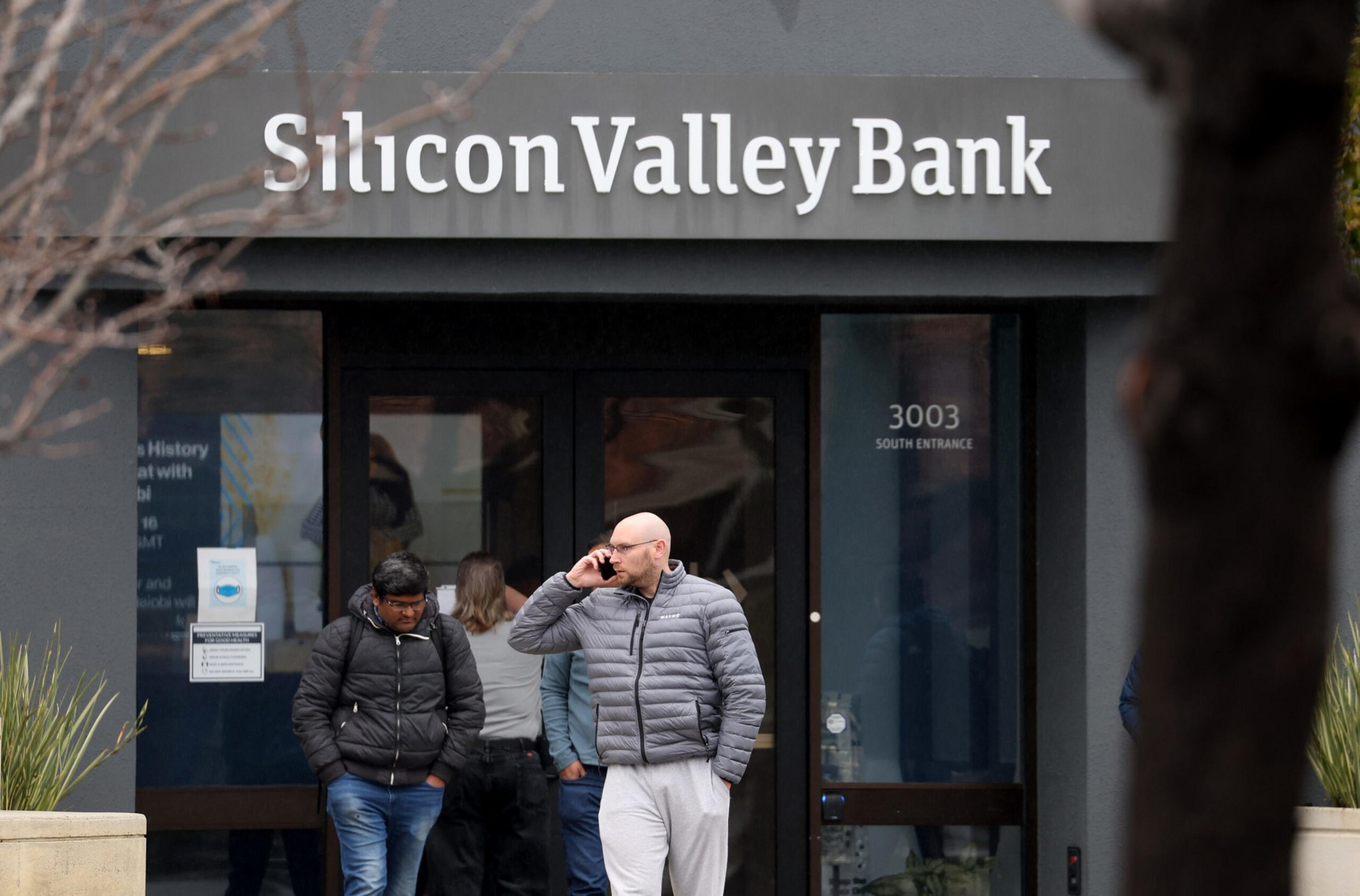Silicon Valley Bank, the Santa Clara-based bank that was a major financial engine for the startup ecosystem for four decades, has been shut down, making it the largest bank to fail since the 2008 financial crisis.
The bank was closed by the California Department of Financial Protection and Innovation, according to a press release from the Federal Deposit Insurance Corporation (FDIC) issued Friday morning.
One employee described the internal mood at the institution as “shellshocked.” The bank’s closure caps a stunning downfall for what had previously been one of Silicon Valley’s most dependable financial partners. Founded in 1983, Silicon Valley Bank grew into a financial powerhouse by catering to the region’s fast-growing tech ecosystem and becoming the go-to banking partner for countless startups.
The bank’s troubles began after the bank announced Wednesday it sold $21 billion worth of securities to raise capital meant to be reinvested in assets that were shorter-term and higher yield, a knock-on impact of the Fed’s interest rate hikes. The bank estimated a $1.8 billion loss on the sale, and said the attempts to raise capital were meant to shore up its balance sheet.
Spooked by the news, investors started to pull their deposits, leading to a cascading run on the bank. Efforts by bank management to reassure their customer base backfired: On Thursday evening, Silicon Valley Bank’s CEO Gregory Becker held a conference call with customers, urging them to “stay calm” (opens in new tab) but triggering further unease.
Meanwhile, Becker himself has dumped approximately $4.6 million of the bank’s stock since Feb. 1. The bank’s president, COO, CFO and CMO also sold off shares recently.
The share price of the bank dropped precipitously after news emerged that the bank was desperately seeking more than $2 billion in capital. CNBC reported (opens in new tab) that the bank was seeking a buyer after failing to raise the funds; those efforts failed.
As news of the bank’s liquidity crisis grew, and prominent VCs were warning their portfolio companies to pull money out of the bank, employees found themselves watching social media for updates in lieu of communication from bank leadership.
Employees at the bank received an email Friday morning that said bank leadership was determining strategic options and told them to work from home indefinitely. The most recent communication from bank management was an email that shared the link to the FDIC announcement of the bank’s closure.
The FDIC has been appointed as the bank’s receiver and has created a new entity called the Deposit Insurance National Bank of Santa Clara to protect insured depositors. All insured deposits of Silicon Valley Bank have been transferred to the new entity.
Silicon Valley Bank’s sudden meltdown ranks as the second biggest collapse in banking history and the largest since the Great Financial Crisis.
Silicon Valley Bank had 17 branches in California and Massachusetts. The main office and all branches of Silicon Valley Bank will reopen on Monday, March 13, 2023; all insured depositors will have access to their funds no later than Monday morning, March 13, 2023.
The FDIC will pay uninsured depositors an advance dividend within the next week. Uninsured depositors will receive a receivership certificate for the remaining amount of their uninsured funds and may be paid out as Silicon Valley Bank’s assets are sold off.
Banking activities from the successor organization will resume no later than Monday, March 13, including on-line banking and other services. Silicon Valley Bank’s official checks will continue to clear. Under the Federal Deposit Insurance Act, the FDIC may create a Deposit Insurance National Bank to ensure that customers have continued access to their insured funds.
Customers with accounts in excess of $250,000 should contact the FDIC toll-free at (866) 799-0959.
As of Dec. 31, 2022, Silicon Valley Bank had approximately $209.0 billion in total assets and about $175.4 billion in total deposits. At the time of closing, the amount of deposits in excess of the insurance limits was undetermined.
Silicon Valley Bank is the first FDIC-backed financial institution to fail since Almena State Bank in 2020.
